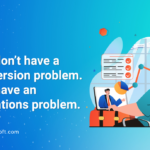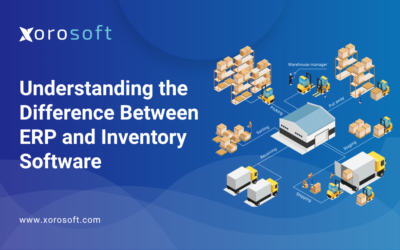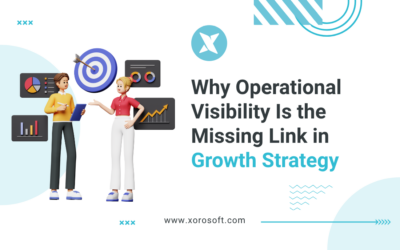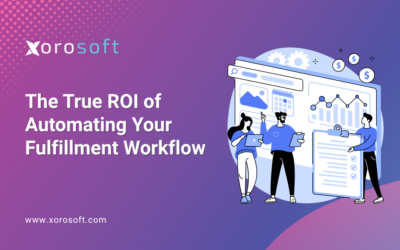
Introduction to ERP Systems
As businesses grow and expand, the need for efficient and streamlined processes becomes paramount. Enterprise Resource Planning (ERP) systems have emerged as the go-to solution for managing complex business operations. An ERP system integrates various departments and functions, providing a centralized platform for data management and decision-making. This article delves into the world of ERP systems, specifically focusing on the importance of Key Performance Indicators (KPIs) in driving financial success.
The Importance of Key Performance Indicators (KPIs) in ERP Systems
Key Performance Indicators (KPIs) are vital metrics that help businesses evaluate their performance and progress towards achieving their goals. In the context of ERP systems, KPIs serve as the compass that guides organizations towards financial success. By measuring and analyzing key data points, businesses gain insight into their operational efficiency, cost management, customer satisfaction, and overall profitability.
One of the primary advantages of ERP systems is the ability to collect and consolidate data from various sources. However, without clearly defined KPIs, this data may lose its significance. KPIs act as a lens through which businesses can interpret the vast amount of information generated by their ERP systems. By focusing on the right KPIs, organizations can identify areas for improvement, make informed decisions, and drive financial success.
Common KPIs for ERP Systems
While the specific KPIs may vary depending on the industry and business objectives, there are several common KPIs that apply to most ERP systems. These KPIs provide a foundation for measuring performance and tracking progress towards financial success. Some of the key KPIs include:
- On-time Delivery: Measures the percentage of orders delivered to customers on or before the promised date. This KPI reflects the efficiency of the supply chain and customer satisfaction levels.
- Inventory Turnover: Calculates how quickly inventory is sold and replenished. A high inventory turnover ratio indicates efficient inventory management, reducing the risk of obsolescence and holding costs.
- Order Fulfillment Cycle Time: Tracks the time taken from order placement to delivery. A shorter cycle time improves customer satisfaction, reduces lead times, and enhances cash flow.
- Return on Investment (ROI): Evaluates the profitability of investments made in the ERP system. A positive ROI indicates that the system is delivering financial benefits to the organization.
Key Performance Indicators for Xorosoft ERP
Xorosoft ERP, a leading ERP solution, offers a range of industry-specific KPIs designed to drive financial success. With its comprehensive suite of modules, Xorosoft ERP empowers businesses to monitor and manage their operations effectively. Some key performance indicators offered by Xorosoft ERP include:
- Profit Margin Analysis: Provides insights into the profitability of individual products, customers, or sales channels. By identifying high-margin products or customers, businesses can focus their efforts on maximizing revenue and profitability.
- Cash Flow Forecasting: Enables businesses to project future cash inflows and outflows, ensuring optimal liquidity management. Accurate cash flow forecasting helps in identifying potential cash shortages and taking timely corrective actions.
- Accounts Receivable Aging: Tracks the age of outstanding customer invoices, highlighting potential collection issues. By closely monitoring accounts receivable aging, businesses can take proactive measures to reduce bad debts and improve cash flow.
- Production Efficiency: Measures the utilization of resources, such as labor and equipment, in the production process. By optimizing production efficiency, businesses can reduce costs, improve delivery times, and enhance customer satisfaction.
The Role of Inventory Management in ERP Systems
Effective inventory management is crucial for financial success in ERP systems. Poor inventory management can lead to stockouts, excess inventory, increased holding costs, and missed sales opportunities. By leveraging the capabilities of ERP systems, businesses can implement robust inventory management practices that drive financial success.
ERP systems provide real-time visibility into inventory levels, demand, and lead times, enabling businesses to optimize stock levels and improve forecasting accuracy. By setting appropriate inventory KPIs, such as inventory turnover and fill rate, organizations can strike a balance between minimizing stockouts and reducing excess inventory. This, in turn, leads to improved cash flow, cost savings, and increased customer satisfaction.
How Accounting KPIs Can Drive Financial Success in ERP Systems
Accounting is a critical function in ERP systems, and KPIs related to financial performance play a pivotal role in driving success. By closely monitoring accounting KPIs, businesses can gain insights into their financial health, identify potential risks, and make informed decisions.
Some key accounting KPIs that can drive financial success in ERP systems include:
- Gross Profit Margin: Measures the profitability of sales after accounting for direct costs. By tracking gross profit margin, businesses can identify pricing strategies, cost-saving opportunities, and overall profit trends.
- Days Sales Outstanding (DSO): Calculates the average number of days it takes to collect payment from customers. A low DSO indicates effective credit management, improved cash flow, and reduced financial risk.
- Operating Cash Flow: Assesses the cash generated or consumed by the core operations of the business. Positive operating cash flow indicates that the organization is generating sufficient cash to cover day-to-day expenses and investments.
- Debt-to-Equity Ratio: Evaluates the long-term financial stability of the organization by comparing its debt to shareholders’ equity. A lower debt-to-equity ratio signifies lower financial risk and increased attractiveness to investors.
Implementing and Monitoring KPIs in Your ERP System
Implementing and monitoring KPIs in your ERP system requires a systematic approach to ensure accurate measurement and meaningful insights. Here are some steps to effectively implement and monitor KPIs:
- Define Clear Objectives: Clearly define your business objectives and align them with the KPIs you want to measure. Ensure that each KPI is specific, measurable, attainable, relevant, and time-bound (SMART).
- Choose the Right KPIs: Select KPIs that align with your business goals and reflect the critical success factors of your industry. Avoid information overload by focusing on a few key KPIs that drive financial success.
- Collect and Analyze Data: Establish data collection mechanisms within your ERP system to capture the required information for each KPI. Regularly analyze the data to identify trends, patterns, and areas for improvement.
- Monitor and Report: Set up regular monitoring and reporting mechanisms to track the performance of your chosen KPIs. Generate intuitive dashboards and reports that provide real-time visibility into the KPIs, facilitating informed decision-making.
Xorosoft ERP: Features and Benefits
Xorosoft ERP offers a comprehensive suite of features designed to streamline business operations and drive financial success. Some key features and benefits of Xorosoft ERP include:
- Integrated Modules: Xorosoft ERP integrates various modules such as finance, sales, inventory, procurement, and production, providing a holistic view of the entire business process.
- Real-time Analytics: Xorosoft ERP offers powerful analytics capabilities, enabling businesses to gain real-time insights into their performance, identify trends, and make data-driven decisions.
- Scalability and Customization: Xorosoft ERP is highly scalable and can be customized to meet the unique needs of each business. This flexibility ensures that the ERP system can grow and evolve alongside the organization.
- Ease of Use: Xorosoft ERP provides a user-friendly interface and intuitive navigation, making it easy for employees to adapt to the system and maximize its benefits.
- Cost Savings: By streamlining processes, reducing manual errors, and optimizing inventory, Xorosoft ERP helps businesses achieve cost savings and improve overall financial performance.
Integrating Xorosoft ERP with Other Systems
To further enhance the capabilities of Xorosoft ERP and drive financial success, businesses can integrate it with other systems. Integration allows seamless data flow between different applications, eliminating duplicate data entry and improving the accuracy of information.
For example, integrating Xorosoft ERP with a Customer Relationship Management (CRM) system can provide a 360-degree view of customer interactions, enabling businesses to deliver personalized experiences and drive customer loyalty. Similarly, integration with a Business Intelligence (BI) system can enhance data analysis capabilities, providing deeper insights into business performance and enabling proactive decision-making.
Conclusion: Why XoroERP is the Right Choice for Your Business
In conclusion, ERP systems have become indispensable for businesses looking to streamline their operations and improve efficiency. XoroERP, developed by Xorosoft, offers a comprehensive and customizable solution that can revolutionize your business operations. With its advanced features, seamless integration capabilities, and success stories from satisfied customers, XoroERP is the right choice for businesses of all sizes.
To experience the benefits of XoroERP firsthand, book a demo with Xorosoft today. Discover how XoroERP can transform your business and help you achieve your growth objectives. Don’t miss out on the opportunity to revolutionize your business operations with the latest innovation in ERP systems – XoroERP.









